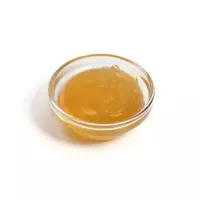Malt sugar (maltose)

Malt sugar or maltose is a natural disaccharide, the chemical composition of which contains glucose residues. Maltose malt sugar got its original name thanks to the English word malt, which literally means "malt. " As it turned out, maltose is contained in large quantities in the composition of sprouted grains of rye, barley and other types of grain.
It is worth noting that in the course of recent scientific studies, maltose or malt sugar was found in the composition of tomatoes, and in addition in the pollen of some plants. The unique properties of maltose allow the human body to easily absorb malt sugar. By its chemical properties, maltose is a substance that is distinguished by good solubility in an aqueous environment.
In addition, maltose has a sweet taste and melts at a temperature of 108S. It is noteworthy that people learned about the existence of malt sugar millennia ago. In Japan, long before the beginning of our era, people themselves did not know the sweet substance that produced starchy varieties of rice or millet. However, the scientific justification of the malt sugar property has been obtained relatively recently.
Malt sugar is obtained in the process of natural fermentation of malt, which is such sprouted, dried, and then ground cereal crops as rye, rice, oats, wheat, as well as maize. Currently, malt sugar is extracted even from some species of mold fungi. As a rule, it is malt sugar that is included in molasses.
It is noteworthy that malt sugar, unlike all other varieties of the product, differs in its less saturated and sweet taste. Malt sugar has found quite widespread use in the food industry. Maltose is used in the production of baby food, since the product does not taste as sweet as cane or beet sugar.
In addition, malt sugar is added to granola and other dietary foods. The researchers assure that maltose can become an excellent, and most importantly more useful substitute for sugar than, for example, sucrose or fructose. Malt sugar is used in the production of syrups, which are subsequently used in confectionery, as well as in baking.
Malt sugar is most often used in the process of making cookies or loaves. Malt sugar is added to ice cream, as well as ready-made porridge or culinary mixtures for making pancakes and pastries. It is worth noting that malt sugar often acts as a dye. Maltose is actively used for the production of molasses, which is an integral part of the beer production process.
Maltose harms
Currently, some experts have begun to pay attention to the harm of maltose, which may occur as a result of frequent consumption of food products containing malt sugar. In order to prevent maltose from causing significant damage to the state of health of the human body, it is worth moderately eating malt sugar.
malt sugar (maltose) 362 kCal
Energy value of malt sugar (maltose) (Ratio of proteins, fats, carbohydrates - ju):
Proteins: 0 g (~ 0 kCal)
Fats: 0 g (~ 0 kCal)
Carbohydrates: 95.3 g (~ 381 kCal)
Energy ratio (bj | y): 0% | 0% | 105%
 Español
Español Français
Français Português
Português Русский
Русский 简体中文
简体中文 繁體中文
繁體中文 日本語
日本語 한국어
한국어 العربية
العربية Türkçe
Türkçe Қазақ
Қазақ Deutsch
Deutsch Italiano
Italiano Українська
Українська
